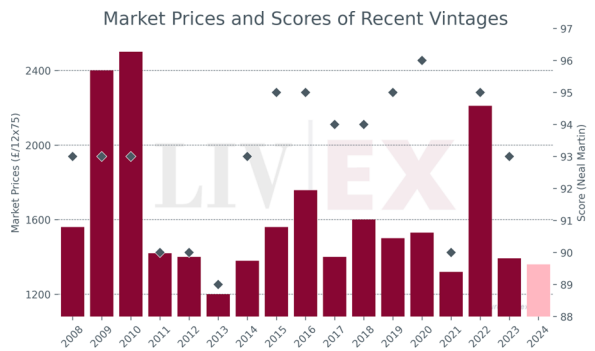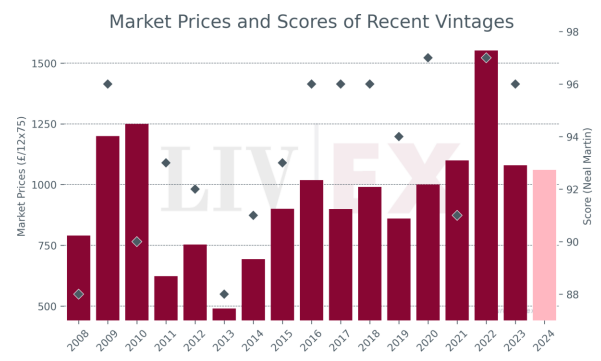
Colour: Red
Grape variety: Pinot Noir (100%)
Total annual production: 65,000 bottles
History
The domaine was founded in the early 20th Century, when Armand Rousseau inherited several vineyards in Gevrey Chambertin. Following advice from close friend and Revue de Vins de France founder Raymond Baudoin, the domaine became one of the first in the 1930s to bottle and sell their wines directly to customers. At the end of prohibition in the USA, Rousseau began exporting his wines overseas.
In 1945, Armand’s son Charles joined the domaine after studying Oenology at Dijon University. Charles inherited the estate from his father in 1959 and helped acquire new vineyards in the nearby Grand Cru areas. Charles then continued to develop the export links set up by his late father and began exporting Armand Rousseau wines to the UK, Germany and Switzerland. By the 1970s, Armand Rousseau exported wines to Australia, Canada, New Zealand, Brazil and Asia.
Charles’ son, Eric, spent a year specialising in Oenology at Dijon University before joining the vineyard team in 1982. He has been credited with helping move Armand Rousseau towards organic viticulture.
A list of all the wines produced by Armand Rousseau can be found below:
- Chambertin
- Chambertin Clos De Beze
- Charmes Chambertin
- Clos Roche
- Gevrey Chambertin
- Gevrey Chambertin Cazetiers
- Gevrey Chambertin Clos Chateau
- Gevrey Chambertin Clos St Jacques
- Gevrey Chambertin Lavaux St Jacques
- Gevrey Chambertin Village
- Mazis Chambertin
- Ruchottes Chambertin Clos Ruchottes
Market performance

The Armand Rousseau Chambertin index – which tracks the price movements of the last ten physical vintages of the wine – is up 84.5% over the past five years. It has outperformed the Burgundy 150, which itself is the top performing sub-index of the Liv-ex 1000 and up 58% over the same period.
Armand Rousseau ranked 19th in the 2016 Power 100, up from 29th place in 2015. 46 wine and vintage combinations from Armand Rousseau traded on Liv-ex during 2016, placing it 5th for the category overall.
Armand Rousseau, Chambertin 2015
Burgundy’s 2015 vintage was described by Decanter as one of “the best vintages for red wines since 2005 and 2010”. Jancis Robinson also wrote that for 2015 Burgundy reds, “quality is looking extremely fine, with some people whispering comparisons with the outstanding 2005 vintage.”
The 2015 vintage of Armand Rousseau has the highest score of the last ten vintages according to The Wine Advocate (NM 97-99). However, at £20,064 per 12×75* it is also the dearest. Neal Martin described the wine as “another outstanding Chambertin from Rousseau that wine lovers will doubtlessly be fighting over for years to come.”
The 2014 vintage was scored at the bottom of the 2015’s barrel range (97) and is available at a 41.2% discount.

Antonio Galloni’s vertical tasting August 2017: highlights
In August 2017, Antonio Galloni released a vertical report on Armand Rousseau Chambertin from 1988-2002. The critic commented that “as so often happens with Burgundy, there were a few surprises. In this case, those surprises came in the form of several wines that were far more expressive and rewarding than the pedigree of their vintages might have suggested.”
Galloni’s top scoring vintages were the 2001, 1999 and 1991, all of which he awarded 98 points. In his tasting note he describes the 1991 as “one of the highlights in this vertical […] simply stratospheric.”
Overall Galloni concluded that “with wine, but especially with Burgundy, it often pays to buy the producer first and the vintage second”.
Galloni’s top 10 scoring wines are shown in the table below. You can read the full report at Vinous.com.

*Market Prices for Armand Rousseau Chambertin are calculated based on the individual bottle prices offered by top European stockholders. This is because cases of Armand Rousseau Chambertin trade at a premium due to their high demand and scarcity.
[mc4wp_form id=”18204″]



